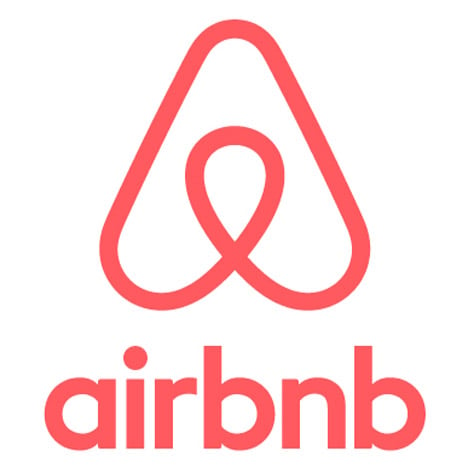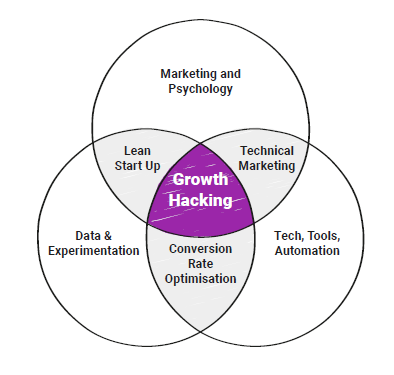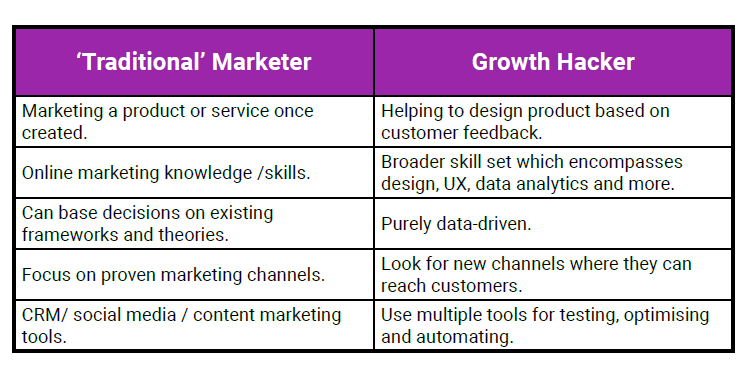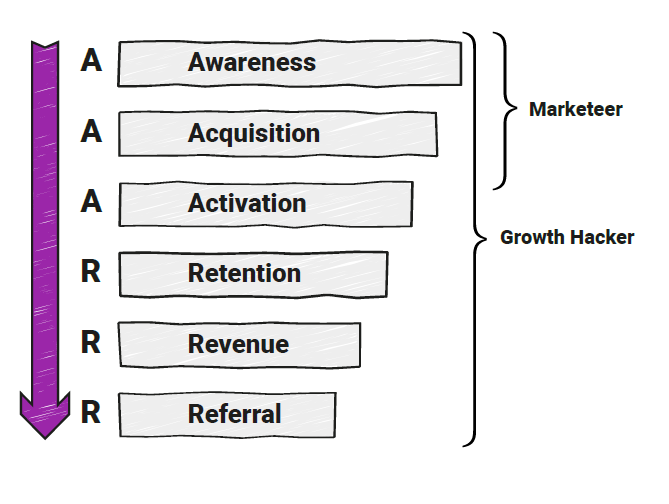Growth hacking, growth hacking, everyone's always talking about growth hacking. Can't we just go back to good old-fashioned computer hacking? I'd love to wear a floor-length leather trench coat, tiny glasses, and fingerless gloves.
Although growth hacking doesn't have a uniform, it is pretty fashionable. And for good reason. Growth hacking allows start-ups and lower-budget companies to become, and stay, competitive. With just a few clever ideas, and nifty tricks.
Have more questions than answers? Need to see some growth hacking graphs as if your life depends on it? Well, for finding this little hidden message, we're giving you the chance to sign up for a free copy of our Growth Hacking guide. Click 👉 here 👈 to be the best growth hacker you can be!
So, today, we're looking at your top FAQs for growth hacking. What is it? Who does it? How do you do it? What are we? Well, maybe not the last one. Let's jump in.
Why Is It Called Growth Hacking?
Growth hacking, also known as guerrilla marketing, has been likened to the "art and science" of rapid experimentation across marketing channels and product development to identify the most effective and efficient ways of growing a business. The term "growth hacker" emerged in 2010 when Sean Ellis coined it to describe engineers or developers who specialized in finding creative and innovative solutions to business growth challenges.
Think small budget, a small amount of time, and big growth. So, growth hacking answers the question: "How can I gain as many customers as possible, with limited resources?" It's about focusing on the most cost-effective solutions.
The term “growth hacking” was coined by Sean Ellis, founder and CEO of GrowthHackers, in 2010, and offers a term that goes beyond "growth" or "growth marketing", and instead focuses on an extra bit of effort on top of current plans. This is summarised by Ward van Gasteren, who suggests that:
“Growth hacking is great to kickstart growth, test new opportunities and see what tactics work.
Marketers should be there to continue where the growth hackers left off: build out those strategies, maintain customer engagement and keep tactics fresh and relevant.”
What Are Growth Hacking Techniques?
Growth hacking techniques are typically used to identify and prioritize the most effective strategies for achieving rapid growth. These tactics can involve everything from developing new products or services to leveraging existing networks, optimising landing pages, running targeted ads, and much more. Growth hackers focus on using a combination of marketing strategies to maximize ROI while stretching resources as far as possible.
What Is A Growth Hacker In Marketing?
A growth hacker in marketing is someone who has an agile mindset and specializes in developing innovative strategies that help businesses achieve their goals quickly.
They use insights gathered through data-driven decision-making to develop personalized campaigns that target customers most likely to convert. Growth hackers are constantly testing and iterating on different strategies, which allows them to quickly identify trends and opportunities for growth.
What Skills Do Growth Hackers Need?
Growth hackers need a range of technical, analytical, and creative skills in order to be successful. Good knowledge of digital marketing channels and platforms is essential, as well as the ability to analyze data to identify patterns or anomalies that could help inform decisions.
They also need strong problem-solving skills in order to come up with creative solutions for challenging business problems. Finally, they should have excellent communication and collaboration skills in order to effectively work with cross-functional teams within an organisation.
What Are Examples Of Growth Hacking?
Examples of growth hacking include optimising website content for SEO, A/B testing different versions of ads, creating viral content that encourages people to share it with their networks, running targeted social media campaigns, offering incentives or discounts to encourage customers to purchase your product, and leveraging existing networks and relationships.
What Companies Use Growth Hacking?
Let's look at some companies that have utilised growth hacking, and seen huge success:
1. Airbnb

This one's pretty clever.
Airbnb gave an option for anyone listing their property on their site the opportunity to post it on Craigslist. If they agreed, the listing would appear on both sites. Then, any clicks on the Craigslist site would be linked back to the original posting on Airbnb.
On top of this, Airbnb combed through posts on Craigslist, contacting users. If they were looking to rent out their place, they would be sent an email tempting them to also list it on Airbnb.
So basically, they infiltrated Craigslist and overtook 'em from the inside. Like a cool spy, or a parasite.
2. Dollar Shave Club

Dollar Shave Club, launched in 2012, was up against some stiff competition. Gillette had been the go-to of every razor buyer in America for decades. So, DSC had to pick a strong argument to overthrow the industry's incumbent.
To do this, they asked customers two questions: Do you like spending $20+ a month on razors, and do you think that razor needs all the flashing lights and unnecessary do-dads of the current products on the market?
Plus, DSC knew the power of video marketing. Do you want to see the ad that triggered over 12,000 orders in one day, and was viewed over 26M times? Of course, you do:
Basically, DSC knew that word of mouth could be the key to growth. This works perfectly alongside viral videos, in order to spread the ad from customer to customer. But they also noticed that when a customer receives a great experience from their brand, they were more likely to recommend it to a friend. This led the company to focus its efforts on the retention of its current customers, over acquiring new ones.
So, investing in the customer's lifetime value brings in new customers with ease. So, when your customers are super happy with the product, they create their own advertising.
What Is The Difference Between Growth Marketing And Growth Hacking?
Growth marketing is a more holistic approach that involves using multiple channels and tactics in order to identify what works best for driving customer acquisition and retention. It focuses on more than just one metric, such as website traffic or customer lifetime value. Growth hacking is a subset of growth marketing that is focused solely on rapid experimentation in order to identify the most effective tactics for quickly achieving business goals.
What Is Growth Hacking Funnel?
A growth hacking funnel refers to the process of taking potential customers from complete strangers to loyal brand advocates.
It typically consists of four steps: acquire, activate, convert and engage. Acquire involves bringing potential customers into your ecosystem, either through organic or paid means; Activate is where you turn those prospects into engaged users; Convert encourages them to take an action, such as making a purchase or signing up for a newsletter; And finally Engage involves building long-term relationships and loyalty.

How Do You Implement Growth Hacking?
Implementing a successful growth hacking strategy requires an agile mindset, as well as an understanding of how different marketing channels work together to drive customer acquisition and retention.
Start by setting clear goals that are measurable and achievable. Identify which platforms or channels would be most effective for reaching your target audience, then collect data on their behaviour in order to gain insights into what works best. Finally, use A/B testing to optimize campaigns in order to maximise ROI.
What Is The Problem With Growth Hacking?
The main issue with growth hacking is that it can lead to short-term gains that often don't have long-term sustainability due to its focus on rapid experimentation.
Additionally, it can be difficult to replicate success without having a deep understanding of the customer journey and their preferences.
Finally, growth hacking techniques can sometimes lead to negative publicity due to the tactics used (such as using bots or fake accounts) which can damage a brand's reputation in the long run.
Overall, growth hacking can be an effective tool for quickly driving customer acquisition and retention in a short amount of time. However, it also has the potential to backfire if not implemented correctly and with caution. Growth hackers should always keep the big picture in mind and ensure that their tactics are aligned with their business goals and overall brand values.
Have more questions than answers? Need to see some growth hacking graphs as if your life depends on it? Well, for finding this little hidden message, we're giving you the chance to sign up for a free copy of our Growth Hacking guide. Click 👉 here 👈 to be the best growth hacker you can be!





